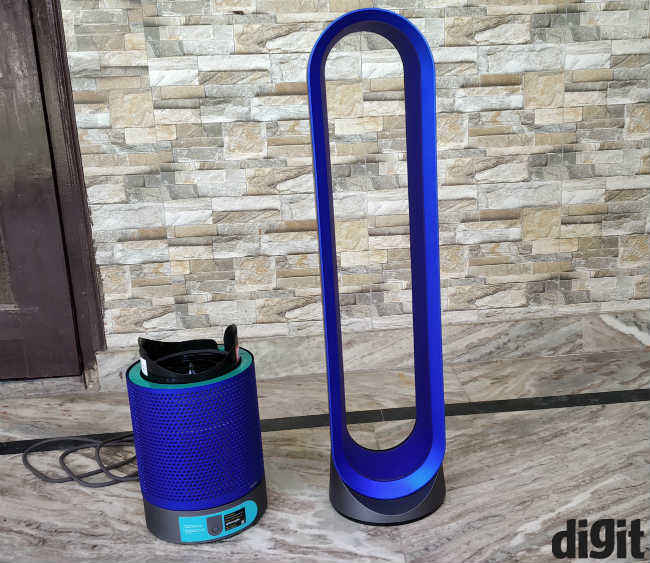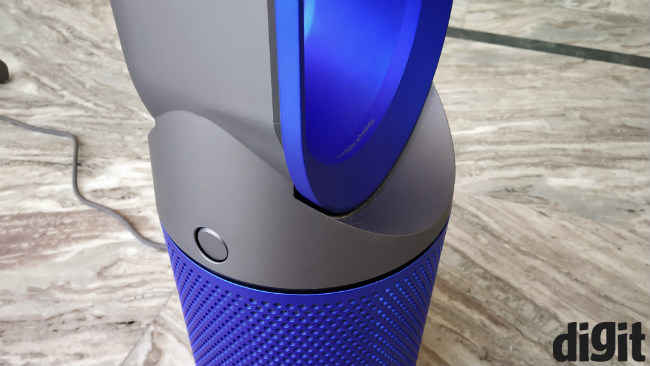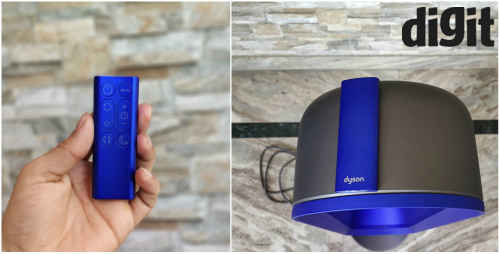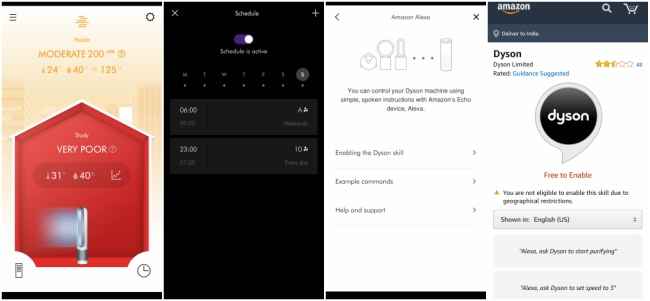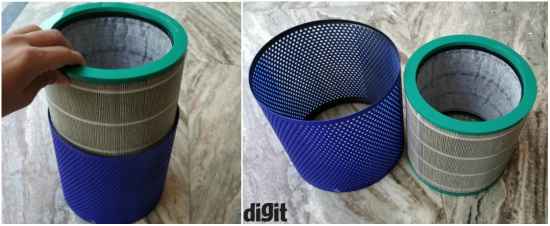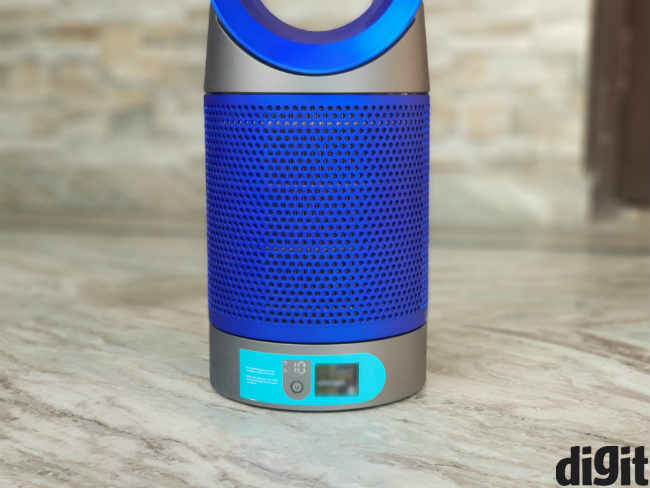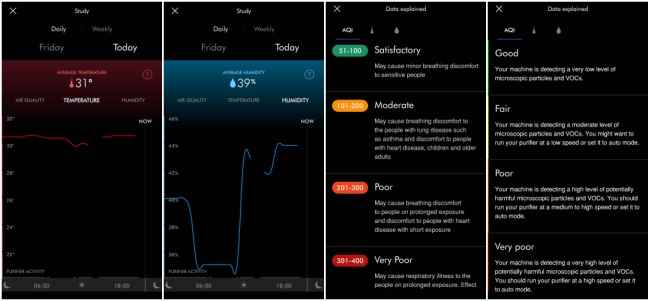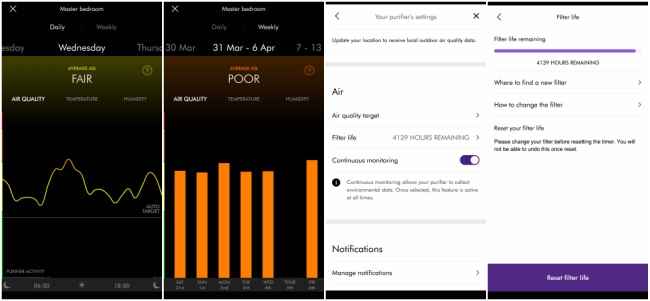Dyson Pure Cool Link Air Purifier review: Ingenious design, lacklustre performance
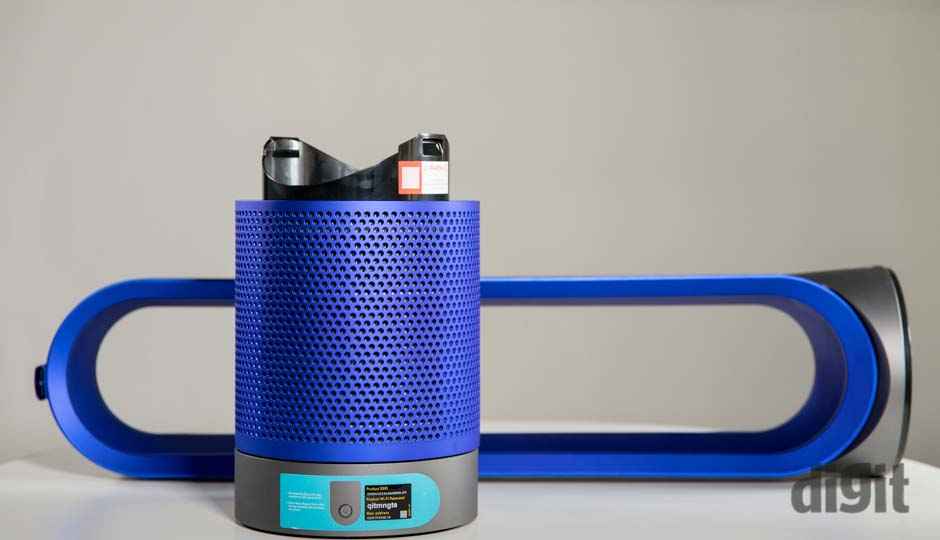
The Dyson Pure Cool Link Air Purifier features a stylish design and is IoT enabled with a companion app, but still lacks in areas like voice control and eliminating foul smells.
Pros
Intelligent design
IoT enabled with app support
Doubles as a fan with good airflow
Easily replaceable filter
Cons
Slow air purification and odour removal
Body attracts dust
As air pollution levels soar past permissible limits, there is a growing concern about being exposed to the harmful particles and gases present in the air. To address this concern, entire businesses have sprouted up with the goal of purifying the air inside your homes and giving you peace of mind in the process. Dyson is one such brand, which recently introduced its Pure Cool Link series of air purifiers in India. There is a tabletop version of it, the Cool Link Desk and there's one for homes called the Cool Link Tower. We have the larger model with us, which is the Cool Link Tower, priced at Rs 39,900 and we've tested it to find out whether it is capable of cleaning the air as it claims or not.
Design and controls
The Dyson Cool Link Tower air purifier features a unique design as opposed to a majority of air purifiers which I’ve come across that employ a similar working methodology. Most purifiers draw in polluted air from near ground level and expel purified air from the top. Dyson engineers saw an opportunity here and came up with a clever design, which provides the user with an additional feature over many other air purifiers. The Dyson Pure Cool Link Tower sucks in polluted air from the bottom, from all sides, and blows air from its approximately 2.2 feet long bladeless loop at the top. There is a thin aperture running along the circumference of the loop, which spews air and the device’s design makes intelligent use of air pressure to blow out cool air at a brisk rate using what the company calls “Air Multiplication” technology. Simply put, the device creates a low-pressure area near and around the loop by directing air over the curved surface of the tower. The air near this low-pressure area rushes in and thus we get better airflow, although only a portion of it is filtered air.
The Dyson Cool Link air purifier weighs less than 4 kgs and can also be detached into two parts, the tower, and the base. To separate them both, the tower sports two buttons, one on each side, which can be pressed down to detach the two fragments. This makes it even more convenient to clean the device or move the air purifier around.
The Dyson Pure Cool Link Tower air purifier can be controlled via the provided IR remote, which can also be magnetically attached to the top of the purifier. I think of this as an added feature because if not for it, I would’ve certainly misplaced the remote. The purifier’s physical remote features buttons for Fan Speed adjustment, Oscillation, Timer, Night mode and Auto mode. Most of the options are self-explanatory, but when switched to auto mode, the air purifier makes use of two sensors placed on the rear. One is a Volatile Organic Compound (VOC) sensor and another is a dust particle sensor. Both are said to collect real-time data on particulate and gaseous impurities present in the air and automatically change the air purifiers’ speed, which in turn affects the rate of air filtration in the room.
Being an IoT device, the air purifier can also be connected to the Dyson Link app, which allows controlling the device remotely, doubles up as a remote and sports some additional features as well. The Timer option on the remote can be set between 15 minutes to 9 hours, but I found that the Scheduling option on the app is a better alternative. I used the latter feature to start up the purifier at 11PM and switch off at 7AM automatically every day. One can also set multiple schedules, for morning, evening or as per their convenience.
The Dyson air purifier is an IoT enabled device and comes with a voice control feature included in the Dyson Link app. However, the Dyson skill for the Amazon Alexa app is not yet available in India and you will not be able to use the voice control feature with an Amazon Echo device. The company says that the Dyson skill is currently being worked upon and will soon be available in the country, but didn’t specify when exactly it will be rolled out.
Air purification
The Dyson Pure Cool Tower has a rather simple process of replacing the air filter. It is cylindrical in shape as it draws in air from all 360 degrees at the base. It has two main layers, the outer one is a glass borosilicate HEPA filter, which the company says is pleated over 200 times to increase the surface area for capturing particulates present in the air, and can capture minute particles as small as 0.1 microns. The second layer sits immediately behind it and consists of activated carbon granules with Tris-coated graphite crystals that can trap harmful gases, household fumes, remove odour and formaldehyde. Tris is said to be an organic compound that improves the absorbency of the graphite crystals. To replace the air filter of the Dyson Pure Cool Link air purifier, one simply needs to detach the upper loop from the base by pushing down on the two buttons placed on its sides and replace the older filter with a new one.
Coming to real-world tests, I placed the Dyson air purifier in a 200 sq ft room. Except for the Wi-Fi status and fan speed, the small screen on the device's base doesn’t display any air quality metrics. Its performance and air cleaning efficiency can only be checked via the Dyson Link app, or if you have an air quality monitor. The app guides you through the steps for adding the device, which is quite straightforward. One will first need to connect to the air purifier by entering its Wi-Fi password, which is mentioned on the device itself, and and then connect it to their home Wi-Fi so that it can be accessed remotely.
Once connected, the app will display the current outside Air Quality Index (AQI), which during the time of my usage ranged unsurprisingly from Very Poor to Moderate as I reside in Delhi NCR. It also shows the daily and weekly summary of air filtration performed in the room along with the average air quality, temperature, and humidity. However, precise indoor AQI readings are not displayed and it ranges from Very Poor (301-400 AQI) to Good (0-50 AQI), providing a rough estimation of how polluted or purified is the air being circulating in a room.
A newly installed filter is said to last for about 4300 hours or six months, depending on the purifier’s usage and the surrounding conditions. The app also displays the number of hours left in the filter's life and it doesn't require cleaning. This is because the filter is supposed to be replaced once its life runs out. However, I noticed that after two weeks of regular usage, the filter was dust-laden, but it shouldn't impact the filtration efficiency of the purifier as the outer mesh is supposed to capture bigger particles like hair, which could block the pores in the filter.
I used the Dyson Cool Link Tower air purifier mainly throughout the night on auto mode and its app was somewhat useful in understanding the air quality data of my room. For me, the app always booted up to display ‘Very Poor’ indoor air quality and the purifier takes about 20 minutes at full speed for bringing it down to ‘Poor’. However, it struggles to normalise the air quality further as it took around 1.5 hours for the room’s air quality to go from Poor to Fair and never rose to Good. As soon as cigarette smoke was introduced in the room, it again shot the air quality down to Very Poor and in auto mode, the device took about 30 seconds to sense this and run at the highest speed setting. The purifier also takes around 30 minutes to rid the cigarette odour from the room and even after an hour or so a faint smell persists. As per Dyson, the purifier's sensors measure PM 2.5, PM 10 and VOC compounds, and only when the three entities reach below the guidelines set by WHO, the app will show a change in the air quality inside the room. However, this also means that the air purifier was unable to rid the air of the three aforementioned particles, even after running overnight. It would have been helpful if the Dyson app showed the number of PM2.5 and PM10 particles in the air so that one could tell if the air is clear of them or not. Dyson could show these numbers through an app update, and we hope that in the future, they will implement the feature.
One disturbing thing which came to my attention while tinkering with the Dyson air purifier is that it never really turns off until it’s disconnected from the power socket. It runs on, what I presume, the lowest speed settings even after being turned off using the remote, app, or via the physical power button placed on the device. There is no mention of this on Dyson’s website and I contacted Dyson’s spokesperson to know why this was happening. As per the company, this is a feature called “Continuous Monitoring”, which can be enabled via the Dyson Link app. After it’s turned on, the purifier runs on the lowest speed setting, which is said to consume 0.5W power. I was also told that the effect of this on the filter’s life is negligible as air is mostly channelled through the two sensors that I’ve mentioned before. The Dyson Pure Cool Link air purifier comes with a power consumption rating of 55W and it will ideally consume one unit of power after running for 20 hours, which is same as a standard ceiling fan.
Should you buy it?
The Dyson Pure Cool Link air purifier is easy to setup and use, well designed and is IoT enabled. However, it’s slow at its primary function of air purification and given the tough, highly polluted conditions in a city like Delhi, it struggles to deliver on the promise of filtering out 99.95 percent of particles from the air. The purifier comes at a steep price of Rs 39,990 and the replacement filter costs Rs 2,690, which in my opinion, supplemented with usage shown in the app and the layer of dust gathered on the filter, in a metro city like Mumbai or Delhi, would need to be replaced about every six months, if not earlier. So, if you're ready to invest in the technology and want a stylish air purifier which stands out in your home and also doubles as a fan, you can go for it. However, if you want an air purifier which is comparatively inexpensive and can perform similarly well, I suggest that you take a look at the Xiaomi Mi Air Purifier 2 or the Kent Alps Air Purifier, the latter one in case you need great odour elimination feature as well.

